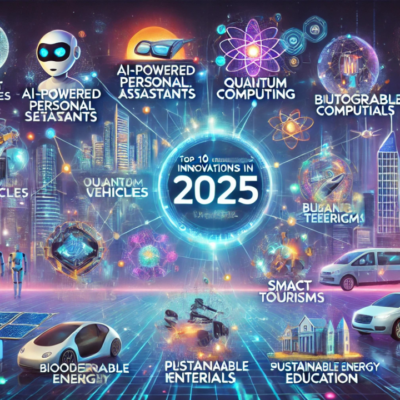The United States is currently undergoing a major shift toward renewable energy, driven by the need to address climate change, energy security, and environmental concerns. As the world’s second-largest emitter of greenhouse gases, America has recognized the urgency of reducing its reliance on fossil fuels and moving towards cleaner, more sustainable energy sources. This transition is not just about environmental responsibility but also about economic opportunity, innovation, and energy independence. In this article, we will explore how America is transitioning to renewable energy, the sources driving this change, and the challenges faced along the way.
1. The Urgent Need for Renewable Energy
Historically, the U.S. has been heavily dependent on fossil fuels like coal, oil, and natural gas for energy generation. These resources have powered the country’s economy for more than a century, but their environmental impact has become increasingly difficult to ignore. The burning of fossil fuels results in the release of greenhouse gases (GHGs), which contribute to climate change and air pollution. As global temperatures rise and weather patterns become more extreme, the need for clean, renewable energy has become clearer.
Renewable energy sources, such as solar, wind, hydroelectric, and geothermal, offer a cleaner, more sustainable alternative to fossil fuels. Unlike fossil fuels, which are finite and polluting, renewable energy sources are abundant and can be replenished naturally. Transitioning to renewable energy is critical for reducing America’s carbon footprint, curbing climate change, and moving toward a more sustainable future.
2. Government Support and Policy Initiatives
The U.S. government has played a pivotal role in supporting the country’s transition to renewable energy. In recent years, both federal and state governments have implemented policies aimed at increasing the use of renewable energy sources. One of the most significant developments in this regard was the passing of the Inflation Reduction Act (IRA) in 2022. This historic piece of legislation allocated hundreds of billions of dollars to clean energy initiatives, including renewable energy tax credits, incentives for electric vehicles (EVs), and funding for energy storage technologies.
In addition to federal support, many states have introduced their own renewable energy mandates. For example, California has set a goal to achieve 100% clean energy by 2045, while other states like New York and Texas have also made substantial progress in adopting renewable energy. These state-level initiatives are helping to accelerate the transition and ensure that renewable energy becomes a central part of America’s energy mix.
3. Key Renewable Energy Sources in the U.S.
Several renewable energy sources are playing a crucial role in America’s transition to clean energy. These include solar energy, wind power, hydroelectricity, and geothermal energy. Each source has its own strengths and challenges, but together, they form a diverse and resilient energy system.
Solar Energy
Solar energy is one of the fastest-growing sources of renewable power in the U.S. The installation of solar panels has become more affordable and efficient over the past decade, making it an attractive option for both homeowners and businesses. Solar power is harnessed using photovoltaic (PV) cells that convert sunlight into electricity. In 2021 alone, the U.S. installed more than 19 gigawatts (GW) of solar capacity, a significant increase from previous years.
The availability of sunlight is abundant across the country, especially in sunny states like California, Nevada, and Arizona. Solar energy is becoming increasingly popular for both residential use and large-scale solar farms. With federal incentives like tax credits and rebates, many Americans are choosing solar power as a way to reduce their carbon footprint and lower their energy costs.
Wind Energy
Wind power is another major renewable energy source in the U.S. Wind turbines, which convert the kinetic energy of wind into electricity, are being installed across the country, particularly in states with high wind potential like Texas, Iowa, and Oklahoma. The U.S. has more than 130,000 wind turbines, and the country is a global leader in wind power production.
In recent years, offshore wind farms have gained attention, with projects planned along the coasts of states like Massachusetts, New York, and Virginia. Offshore wind has the potential to provide a significant amount of electricity and is expected to play a vital role in the future of renewable energy.
Hydroelectric Power
Hydropower, or hydroelectric energy, has been a reliable source of renewable power in the U.S. for decades. Large dams like the Hoover Dam and Grand Coulee Dam have been instrumental in providing electricity to millions of Americans. Hydropower accounts for around 6-7% of the total electricity generated in the U.S. While hydropower is a mature technology, its expansion is somewhat limited by geographical constraints. Large-scale dams require specific topographies and can have significant environmental impacts, such as disrupting local ecosystems.
Nevertheless, smaller hydroelectric projects, such as “run-of-river” systems, are gaining popularity as a more sustainable alternative to large dams. These smaller projects can be deployed in regions with flowing rivers, allowing for the generation of clean power without the need for major infrastructure changes.
Geothermal Energy
Geothermal energy, which harnesses heat from beneath the Earth’s surface, is another important but often overlooked renewable resource. Geothermal power plants use steam generated from the Earth’s heat to drive turbines and produce electricity. While geothermal energy accounts for a small portion of the U.S. energy mix, it has significant potential, especially in states like California and Nevada, where geothermal reservoirs are abundant.
Geothermal energy has the advantage of being available 24/7, unlike solar and wind power, which are intermittent. This makes it a reliable source of clean energy that can help balance the grid when solar or wind generation is low.
4. Challenges in Transitioning to Renewable Energy
While the transition to renewable energy is progressing, there are several challenges that need to be addressed to ensure a successful shift to clean power.
Energy Storage and Grid Modernization
One of the biggest challenges with renewable energy is its intermittency. Solar and wind energy are not always available when demand is highest—solar energy is only produced during the day, and wind power depends on weather conditions. To address this issue, energy storage technologies, such as advanced batteries, are crucial. These technologies allow excess energy produced during periods of high generation to be stored and used when demand peaks.
Moreover, the U.S. electric grid needs significant modernization to accommodate the growing share of renewable energy. Many parts of the grid were designed to handle centralized, fossil fuel-based power plants and are not equipped to handle the variable nature of solar and wind generation. Updating the grid to better integrate renewable energy and improve energy storage capabilities will be key to a successful transition.
Environmental Impacts of Renewable Energy Production
Although renewable energy sources are far cleaner than fossil fuels, they are not entirely free from environmental impact. For example, large-scale solar farms can disrupt local ecosystems, and wind turbines can pose a threat to bird populations. Additionally, the production of batteries for energy storage requires mining materials like lithium and cobalt, which can have environmental consequences if not managed responsibly.
Efforts are being made to mitigate these impacts through sustainable development practices, such as placing solar farms on previously disturbed land or using smaller, more efficient wind turbines. Balancing the need for clean energy with environmental protection will require careful planning and innovative solutions.
5. The Future of Renewable Energy in America
Looking ahead, the future of renewable energy in the U.S. is bright. Technological advancements are making renewable energy sources more efficient and affordable. Solar panels are becoming cheaper and more efficient, wind turbines are being designed to capture more energy, and energy storage technologies are improving.
The U.S. is also becoming a leader in the global renewable energy market, with American companies at the forefront of innovations in electric vehicles, battery storage, and offshore wind energy. As the demand for renewable technologies grows worldwide, America stands to benefit economically from its investments in clean energy.
The cultural shift toward sustainability is also playing a role in accelerating the transition. More consumers are seeking eco-friendly products and services, pushing companies to adopt greener practices. This trend, combined with increasing public awareness of climate change, will continue to drive the adoption of renewable energy.
Conclusion
America’s transition to renewable energy is well underway and presents an exciting opportunity for the future. While there are challenges to overcome, the benefits of clean, sustainable energy far outweigh the obstacles. By investing in renewable technologies, modernizing the grid, and addressing environmental impacts, the U.S. can reduce its dependence on fossil fuels and move toward a greener, more sustainable energy system. With the support of government policies, technological innovation, and a growing commitment to sustainability, America is on the path to a cleaner, more energy-secure future.
Also Read – How Tesla Revolutionized the Auto Industry.





